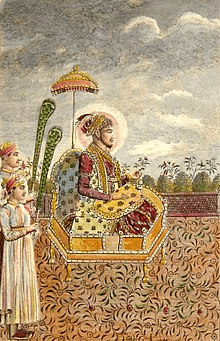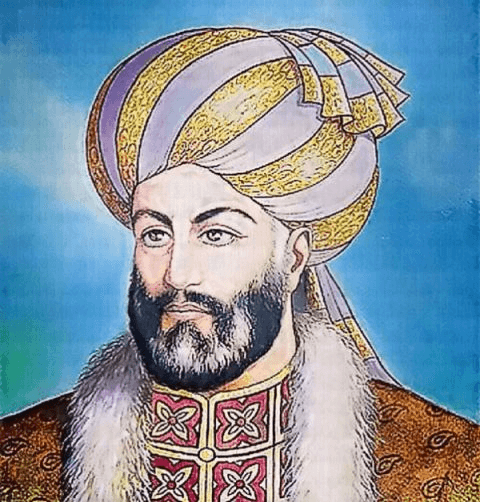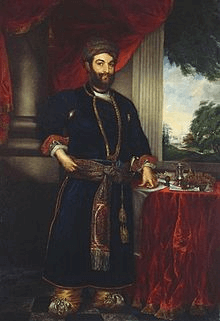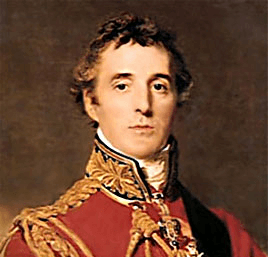BPSC (Bihar) Exam > BPSC (Bihar) Notes > Revision Notes: Decline of Mughal Empire
Revision Notes: Decline of Mughal Empire - BPSC (Bihar) PDF Download
- The most important reason for the worsening of state finances during the reign of Bahadur Shah was reckless grant of jagirs and promotions.
- The action of Bahadur Shah which could be called a great diplomatic move was the release of Sahu, the son of Sambhaji, from the Mughal captivity.
- The most powerful noble during the reign of Bahadur Shah and Jahandar Shah was Zulfiqar Khan.
- The last Mughal emperor who was deported to Rangoon by the English on the charge of par-ticipating in the revolt of 1857 was Bahadur Shah II.
- A courtesan called Lal Kunwar dominated the affairs of the Mughal empire during the reign of Jahandar Shah.
- The main reason for the defeat of the Mughal forces at the hands of Nadir Shah was disunity, poor leadership, mutual jealousies and distrust were responsible for the defeat.
- The Saiyid Brothers came into prominence and emerged powerful during the reign of Farrukh siyar.
- Defeat of the Marathas in the Third Battle of Panipat became practically inevitable on account of postponement of battle for two and a half months by Bhau.
- The number of Later Mughal rulers placed on and overthrown from the throne by the Saiyid Brothers was Four.
- In the early eighteenth century several areas in the South were called do-amlis, where the Mughal and Maratha or some other dual rule was forced on the people
 Fig: Shah Alam II
Fig: Shah Alam II - The Later Mughal emperor Shah Alam II was actually known as Ali Gauhar.
- In 1788 the Later Mughal emperor Shah Alam II was blinded by an Afghan chief called Ghulam Kadir.
- At the time of Third Battle of Panipat, the Mughal emperor was Shah Jahan II.
- Murshid Quli Khan, the Mughal governor of Bengal, was originally A South Indian Brahmin.
- The governorship of Bengal became hereditary with Shujauddin Khan.
- From 1761 to 1770, the supreme dictator of Delhi was Najib Khan.
- After nearly twelve years of exile, Shah Alam II was escorted back to the throne of Delhi by Mahadi Sindhia.
- The Nawab of Bengal who shifted the capital from Dacca to Murshidabad was Murshid Quli Khan.
- The Nawab of Bengal who concluded a treaty with the Marathas and agreed to pay them an annual tribute as chauth and ceded to them the revenue of part of Orissa was Alivardi Khan.
- Nadir Shah defeated the Mughal emperor Muhammad Shah in the battle of Karnal.
- “Everywhere in lane and bazar lay the headless trunks of the slain. For seven days following the general slaughter, the water (in the Yamuna) flowed of a blood-red colour”. The statement describes the sack of Delhi during the invasion of Ahmad Shah Abdali.
- The early capital of the nawabs of Awadh was Fyzabad.
- The nawab of Awadh who committed suicide to save himself from disgrace at the hands of Nadir Shah was Saadat Khan
 Fig: Ahmad Shah Abdali
Fig: Ahmad Shah Abdali - After the Third Battle of Panipat Ahmad Shah Abdali invaded India three more times to punish The Sikhs.
- The emergence of the Sikhs as a territorial power synchronised with their organisation into misls or confederacies.
- The Sikhs were transformed from a devotional religious sect into a militant anti-Muslim brotherhood in the seventeenth century. The Sikh Guru who started this transformation was Guru Hargobind.
- After Guru Gobind Singh’s death, the institution of Guruship came to an end and the spiritual authority passed to Granth Sahib.
- The backbone of the armies of the misls was the cavalry
- From Shah Shuja to Ranjit Singh acquired the world-famous diamond—the Koh-i-noor.
- The primary reason for the defeat of the Sikh army in the First Anglo-Sikh War was half-heartedness and treachery of the Sikh generals.
- Saadat Khan was the founder of the autonomous kingdom of Awadh or Oudh.
 Fig: Saadat Khan
Fig: Saadat Khan - The nawab of Awadh who was appointed the wazir of the Mughal empire was Safdarjang.
- The Nawab of Bengal whose sense of justice was so famous that the people believed that they “lived in Naushirvan’s reign” was Shujauddin.
- Chin Qulich Khan founded the state of Hyderabad.
- The sarkar of Guntur was the bone of contention between Nizam Ali, the ruler of Hyderabad, and the English.
- Lord Wellesley’s main objective in concl-uding a subsidiary treaty (1798) with the Nizam was to exterminate French influence and intrigues in India.
 Fig: Lord Wellesley
Fig: Lord Wellesley - A distinguished Rajput ruler of the eighteenth century who was a great law maker, astronomer, town-planner and scientist, was Sawai Jai Singh of Amber.
- The greatest contribution of Sultan Tipu to Malabar was Building a chain of roads.
- A Hindu ruler of the eighteenth century who performed two asvamedha sacrifices was Sawai Jai Singh of Amber.
- Surajmal is known as the ‘Plato of the Jat tribe’.
The document Revision Notes: Decline of Mughal Empire - BPSC (Bihar) is a part of BPSC (Bihar) category.
All you need of BPSC (Bihar) at this link: BPSC (Bihar)
FAQs on Revision Notes: Decline of Mughal Empire - BPSC (Bihar)
| 1. What were the main factors that led to the decline of the Mughal Empire? |  |
Ans. The decline of the Mughal Empire can be attributed to several factors including weak successors, Aurangzeb's religious policies, economic instability, and the rise of regional powers. The empire faced internal conflicts, financial troubles, and a lack of effective governance, which gradually weakened its grip over the territories.
| 2. How did Aurangzeb's religious policies contribute to the decline of the Mughal Empire? |  |
Ans. Aurangzeb's religious policies, which focused on the promotion of orthodox Sunni Islam and the suppression of other religions, created unrest among the majority Hindu population. This led to rebellions and the alienation of important allies, resulting in a loss of support for the empire and ultimately contributing to its decline.
| 3. What impact did the economic instability have on the decline of the Mughal Empire? |  |
Ans. Economic instability played a significant role in the decline of the Mughal Empire. The empire faced chronic revenue shortages, largely due to corruption, mismanagement, and the increasing influence of regional powers. This led to a decline in agricultural productivity, a collapse in trade, and a weakening of the empire's economic foundations.
| 4. How did the rise of regional powers contribute to the decline of the Mughal Empire? |  |
Ans. The rise of regional powers, such as the Marathas, Rajputs, and Sikhs, challenged the authority of the Mughal Empire. These powers started asserting their independence, weakening the central authority and leading to the fragmentation of the empire. The Mughals found it difficult to control these regional powers, further accelerating their decline.
| 5. Were there any external factors that contributed to the decline of the Mughal Empire? |  |
Ans. Yes, external factors also played a role in the decline of the Mughal Empire. The increasing influence of European trading companies, particularly the British East India Company, impacted the empire's trade and revenue. The company gradually gained control over important ports and territories, further diminishing the Mughal Empire's power and influence.
Related Searches




















